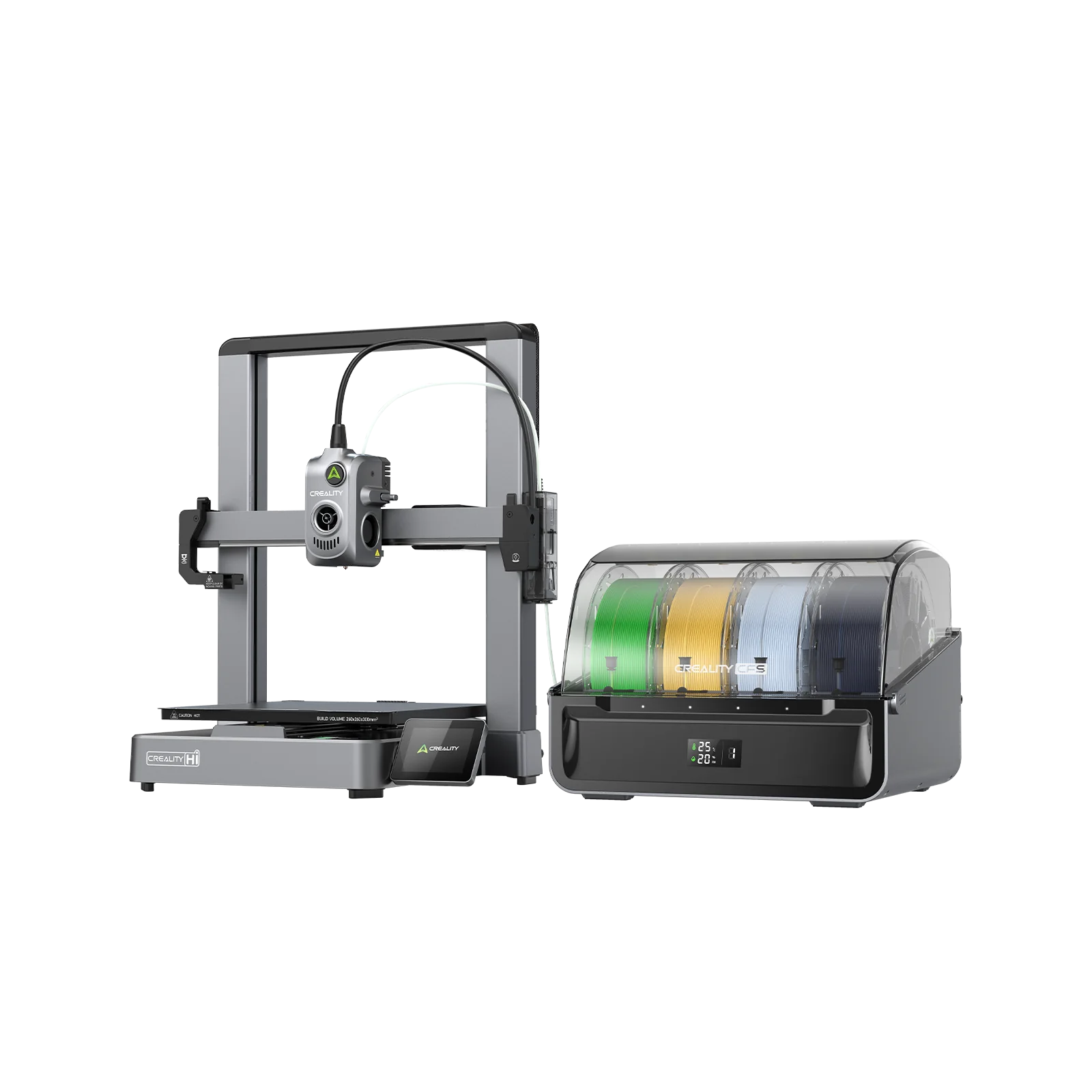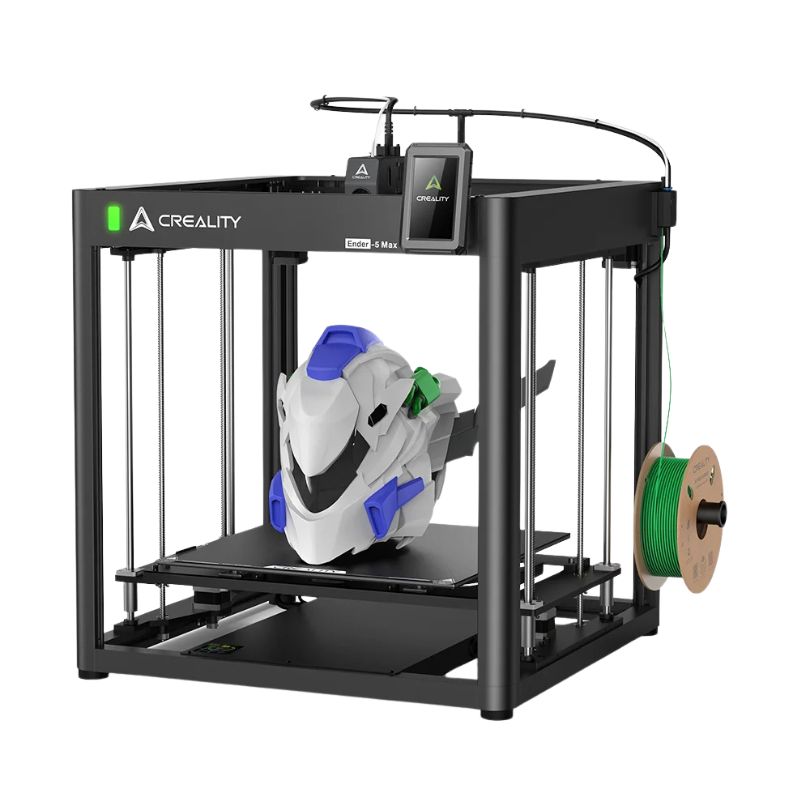Compare Hi Combo vs Ender 5 Max
Comparison between the best 3D printers
Choose the best 3D printer at the best price. The cheapest 3D printers are here.
Buy a 3D printer here with 3D Fila.
 |
 |
|
| Model | Hi Combo |
Ender 5 Max |
| Printing Material | Filament | Filament |
| Buy Filament for Creality Hi Combo | Buy Filament forCreality Ender 5 Max | |
| Estimated price | $469,00 | $769,00 |
| Manufacturer | Creality | Creality |
| Release Year | 2025 | 2025 |
| Print Volume [mm] | 260x260x300 | 400x400x400 |
| Printer Size [mm] | 409x392x477 | 649x721x850 |
| Weight [kg] | 19,14 | 25,9 |
| Power Loss Recovery | YES | YES |
| Enclosed printer | NO | NO |
| Bed Leveling | Automatic | Automatic |
| Filament End Sensor | YES | YES |
| Bed type | Heated | Heated |
| Power supply system | Direct Drive | Direct Drive |
| Standard nozzle | 0,4 | 0,4 |
| Maximum Nozzle Temperature [°C] | 300 | 300 |
| Maximum Bed Temperature [°C] | 100 | 100 |
| Maximum printing speed [mm/s] | 500 | 700 |
| Filament holder | YES | YES |
| Camera for supervision | YES | YES |
| Recommended filaments | Hyper-PLA/PLA/PETG/ABS/PLA-CF | Hyper PLA/PLA/PETG/TPU95A/ABS/ASA/PLA-CF/PA/PLA-Silk |
| Recommended slicers | Creality Print 5.1 | Creality Print 5.1 |
| Maximum Resolution [mm] | 0,1 | 0,1 |
| Processor | ||
| Display | Touchscreen 3,2'' | Touchscreen 4,3'' |
| Power Supply | 390 W | 1250 W |
| Connectivity | SD Wifi Creality Cloud | USB, Wifi |
| Operating systems | Windows, Linux e Macbook | Windows |
| Date of registration in the system | 2025-01-27 | 2025-02-18 |
| Release date | 2025 | 2025 |
| Extra features | The Creality Hi Combo is an advanced 3D printer featuring the CFS system for up to 16 colors and intelligent filament management. It boasts a robust metal frame, speeds up to 500 mm/s, precise auto-leveling, an integrated extruder design, easy-to-swap tri-metal nozzle, and active vibration sensing for smooth prints. Its 95% pre-assembled, with a foldable touchscreen, built-in camera with privacy protection, and Creality OS support for a seamless and powerful experience. | The Ender 5 Max by Creality features a 400 x 400 x 400 mm build volume, a rigid aluminum frame, and 36-point auto bed leveling. With speeds up to 700 mm/s, it boasts a hardened dual-gear extruder and a 1000W heated bed, reaching 80°C in just 200 seconds. It supports remote management via WLAN, a tri-color status indicator, and quiet operation, making it ideal for high-precision, high-productivity 3D printing. |
| Support for multiple colors and materials (AMS and CFS) | YES | NO |
Notes * |
||
| Cost-benefit | 8 / 10 | 7 / 10 |
| Hardware | 5.4 / 10 | 4.5 / 10 |
| Tela | . | . |
| Print volume | 4 / 10 | 4 / 10 |
| Performance | 4 / 10 | 6 / 10 |
Conclusion |
| In comparing the Creality Hi Combo and the Ender 5 Max 3D printers, several key differences emerge that cater to different user needs and priorities. The Creality Hi Combo, priced more affordably, offers a compact build volume and advanced features such as the CFS system for multi-color printing, making it ideal for hobbyists or those new to 3D printing. Its automatic bed leveling, direct drive system, and a maximum speed of 500 mm/s contribute to its usability and print quality. The lightweight design and touchscreen interface enhance user experience, particularly for those seeking a balance of functionality and cost. Conversely, the Ender 5 Max, while at a higher price point, presents superior build volume and printing speed, catering to professionals or advanced users requiring larger projects and higher productivity. Its robust design, rapid heating bed, and reliable auto bed leveling signify higher precision and efficiency. Furthermore, it supports a wider range of filaments, which adds versatility for complex printing jobs. In summary, the choice between these two printers largely depends on the user's requirements. If budget and general functionality are primary concerns, the Creality Hi Combo is a commendable option. However, for those seeking enhanced capabilities, build size, and advanced features for professional use, the Ender 5 Max stands out as the more suitable investment. Ultimately, both printers offer solid performance but serve different segments of the 3D printing market effectively. |

